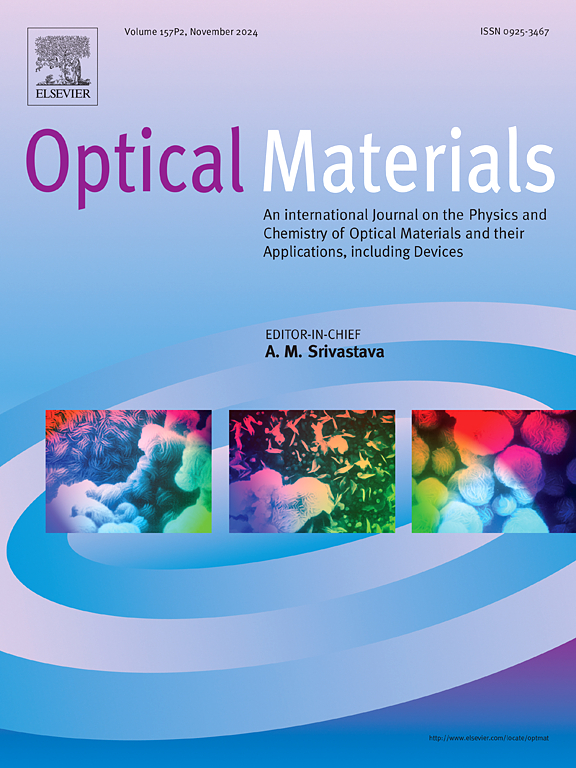Investigation on the highly fluorescent IRMOF-3/thiol-ene polymer and its ligand-based composite with 76 % quantum yield
IF 3.8
3区 材料科学
Q2 MATERIALS SCIENCE, MULTIDISCIPLINARY
引用次数: 0
Abstract
The isoreticular metal organic frameworks-3 (IRMOF-3)/non-stoichiometric thiol-ene (OSTE) and 2-aminoterephthalic acid (BDC-NH2)/OSTE composites were synthesized via a photo-induced click reaction. Interestingly, through polymerization with OSTE, both the fluorescence lifetime and intensity of IRMOF-3 increased. Moreover, its two lifetimes merged into one, which could be ascribed to the inhibition of the dynamic non-radiative quenching process by the OSTE network. In contrast, the ligand maintained a single lifetime with only minor changes. The dilution effect of the thiol-ene mixed solution could effectively reduce the static photo-induced electron transfer process between the ligand and toluene molecules. After the post-synthetic polymerization (PSP) treatment, the photoluminescence quantum yield (PLQY) of IRMOF-3 was increased from 7.2 % (in toluene) to 42.3 %, and that of the pure BDC-NH2 ligand was significantly enhanced from 1.8 % (in toluene) to 76.0 %. Moreover, when a commercially available 370-nm light-emitting diode (LED) chip was individually encapsulated by the two composites, it could emit intense indigo light. This rapid PSP treatment via the OSTE polymer holds promise for application in other excellent luminescent MOFs.
高荧光IRMOF-3/巯基聚合物及其量子产率76%的配体基复合材料的研究
采用光诱导咔嗒反应合成了等孔金属有机骨架-3 (IRMOF-3)/非化学计量硫醇烯(OSTE)和2-氨基对苯二甲酸(BDC-NH2)/OSTE复合材料。有趣的是,通过与OSTE聚合,IRMOF-3的荧光寿命和强度都增加了。此外,它的两个寿命合二为一,这可能归因于OSTE网络对动态非辐射淬火过程的抑制。相比之下,配体维持单一的寿命,只有微小的变化。巯基混合溶液的稀释效应可以有效地降低配体与甲苯分子之间的静态光诱导电子转移过程。经合成后聚合(PSP)处理后,IRMOF-3的光致发光量子产率(PLQY)从7.2%(甲苯)提高到42.3%,纯BDC-NH2配体的光致发光量子产率从1.8%(甲苯)显著提高到76.0%。此外,当商用的370纳米发光二极管(LED)芯片被这两种复合材料单独封装时,它可以发出强烈的靛蓝光。这种通过OSTE聚合物进行的快速PSP处理有望应用于其他优秀的发光mof。
本文章由计算机程序翻译,如有差异,请以英文原文为准。
求助全文
约1分钟内获得全文
求助全文
来源期刊

Optical Materials
工程技术-材料科学:综合
CiteScore
6.60
自引率
12.80%
发文量
1265
审稿时长
38 days
期刊介绍:
Optical Materials has an open access mirror journal Optical Materials: X, sharing the same aims and scope, editorial team, submission system and rigorous peer review.
The purpose of Optical Materials is to provide a means of communication and technology transfer between researchers who are interested in materials for potential device applications. The journal publishes original papers and review articles on the design, synthesis, characterisation and applications of optical materials.
OPTICAL MATERIALS focuses on:
• Optical Properties of Material Systems;
• The Materials Aspects of Optical Phenomena;
• The Materials Aspects of Devices and Applications.
Authors can submit separate research elements describing their data to Data in Brief and methods to Methods X.
 求助内容:
求助内容: 应助结果提醒方式:
应助结果提醒方式:


